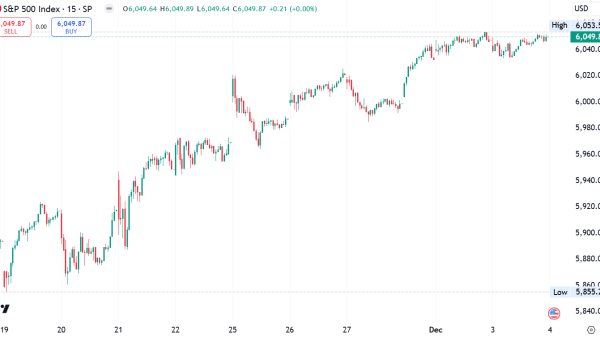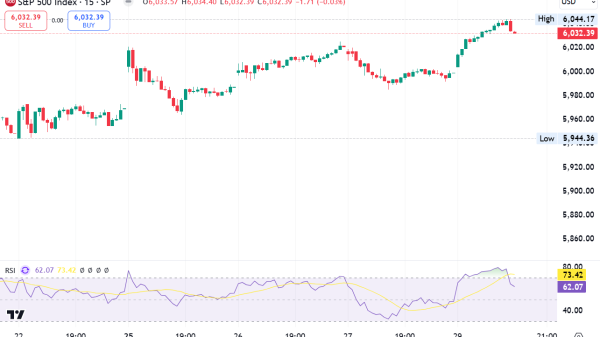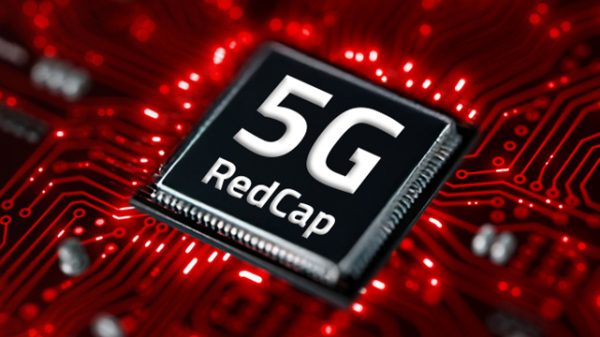IoT Analytics published an analysis based on the “IoT Commercialization & Business Model Adoption Report 2024” report highlighting 8 insights from OEMs with business models that are considered more successful.
Key insights:
Many equipment manufacturers (OEMs) have significantly advanced their IoT strategies, introducing innovative software and services, and revamping their business models. This evolution has enabled some to expand their IoT deployments to millions of devices successfully.
Connected products are now the norm – It is expected that by 2026 more than 50% of products sold by OEMs will be IoT connected.
IoT Analytics’ 206-page IoT Commercialization & Business Model Adoption Report 2024 delves into OEMs’ approaches to IoT business models. It highlights key factors that distinguish the more successful OEMs from less successful ones, such as acting on customer equipment usage behavior.
Key quotes:
Knud Lasse Lueth, CEO at IoT Analytics, remarks: “Our 2024 IoT Commercialization & Business Model Adoption Report, reveals pivotal insights into what differentiates successful IoT implementations among OEMs. A standout finding is the projection that over 50% of products sold by OEMs will be IoT-connected by 2026. The report also highlights the significance of leveraging customer equipment usage data as a cornerstone for innovation, enabling OEMs to offer tailored solutions that significantly enhance customer experiences and operational efficiencies. This report is a clarion call to OEMs everywhere: the path to IoT success is through deep customer insights and innovative business models. It takes years to get there but early innovators show that the journey is worth it.”
Dimitris Paraskevopoulos, Senior Analyst at IoT Analytics, adds that “From the question of ‘Should I build connected IoT products?’ in 2014 to ‘How should I build my (next) smart connected products?’ in 2024, the shift in OEMs’ approach to IoT is evident. With over 16 billion active connected IoT devices globally, the transformation is not just about sales or specific partnerships. It’s about understanding customer behavior, analyzing it, and better serving their current and future needs.”
How to create a successful IoT business model
Less than 10 years ago, in November 2014, Michael Porter (one of the world’s most influential management thinkers and professor at Harvard Business School) and Jim Heppelman (former CEO at PTC) published a widely recognized article in Harvard Business Review titled “How Smart, Connected Products Are Transforming Competition.” In it, they argued that IoT-connected products would alter traditional industry structures, business models, and the nature of competition in many industries.
While the change has not been as quick as expected, 10 years later, we do have over 16 billion active connected IoT devices globally as of 2023, including consumer devices (e.g., smart homes and watches) and enterprise equipment (e.g., connected factory machinery, electrical equipment, and commercial vehicles). Most large OEMs have a connected product roadmap and, with it, a software and servitization strategy.
In 2014, when the article came out, many OEMs that IoT Analytics spoke with asked, “Should I also build connected IoT products?” This has since dramatically shifted; now, in 2024, the questions OEMs are asking are, “How should I build my (next) smart connected products?” and related to that, “What should the business model look like?”
Prominent examples of OEMs that have innovated their business model and subsequently scaled to hundreds of thousands or even millions of connected devices at this point include:
BMW, with over 20 million connected vehicles on the road worldwide.
John Deere, with over 500,000 connected agriculture- and construction-industry machines in the field.
Schindler, with over 500,000 connected elevators around the world.
Even smaller OEMs are reaching impressive numbers with their connected devices. Take the example of Italy-based professional kitchen machinery manufacturer UNOX, a company with approximately 1,200 employees. Unox started its connected product proof-of-concept stage in 2015 and has since connected more than 30,000 ovens and introduced new revenue streams with it.
There are thousands of other examples of smart product/IoT business models that are scaling to these numbers of connected devices, and the resulting business implications should not be taken lightly—they are often core to the company strategy. Take, for example, US machinery giant Caterpillar, which has set a target of $28 billion in service sales by 2026. The data coming from smart connected IoT trucks, excavators, and wheel loaders play a crucial role in achieving that target.
“Our confidence is increasing that we will achieve our $28 billion services target by 2026. Through tools like the new Cat® Central and SIS2GO apps and insights from data on our more than 1.4 million connected assets, we are creating a superior customer experience as we help customers minimize downtime, improve utilization and extend product life.” – Jim Umpleby, Chairman and CEO at Caterpillar (2022)
In our research for the 206-page IoT Commercialization & Business Model Adoption Report 2024 (published February 2024), we looked at 100 OEMs like Caterpillar to understand: What are the takeaways and best practices these companies have developed as they are scaling their connected products to the thousands or millions?
The data are based on surveys with participants from these OEMs who have knowledge of and can speak to their respective OEM’s IoT business model.
Components of a successful IoT implementation
There are many tradeoffs when bringing a smart connected product to market, for example:
Which features should we focus on developing?
Do we monetizethe hardware, the software, a service, or the data? Or perhaps a combination of those?
Do we charge once, monthly, or perhaps even per usage (pay-per-use)?
Do we offer some features for free?
Do we source the tech stack via an external vendor, develop it in-house, or find an open-source solution?
The report provides answers and viewpoints on each of these tradeoffs and highlights which IoT business models are considered to be more successful. This article does not go into the same depth as the report, but it highlights 8 insights that were uncovered during the analysis.
We split our analysis of IoT business models into 4 parts:
1. Making the case for connected equipment (e.g., determining the revenue contribution, outlining key benefits, and highlighting key beneficiaries of connected equipment)
2. Developing the IoT product (e.g., budgeting, sourcing parts, time to market, and developing the features)
3. Developing the business model (e.g., market positioning, key use cases/features, value chain, and revenue model)
4. Commercializing the IoT product (e.g., determining ways to monetize, developing measures to drive adoption)
1. Making the case for connected equipment
Insight 1: 40% of products sold by OEMs are connected.
The survey participants reported that, on average, connected products accounted for 40% of the product mix that was sold in 2023. The participants expect this average to rise to 54% by 2026, though OEMs in APAC are already seeing over 50% of products sold being connected.
Machinery OEMs and electrical equipment makers were the forerunners in this regard as of Q4 2023. However, respondents from OEMs in other major industries are expected to see their connected products take more of the share of the total products sold over the next three years and match those two industries. For example, according to the survey participants, ~34% of products sold by automotive OEMs in 2023 were connected. But by 2026, the participants from that industry expect that the share of connected products for their OEMs will reach 54%, the biggest expected increase among other major industries.
Insight 2: Gaining deep insights into customer usage is the single most valuable feature of connected products.
The research found signs that the core value of connected devices is to drive OEMs and customers closer together. 67% of the survey participants reported that generating deep insights into customer usage of their products and services is either extremely or very useful for their organization—the highest ranked in terms of benefits from connected products. Second to this was better management of customer needs, which 61% of OEMs reported as extremely or very useful.
However, it is not simply about sales or focusing on specific partnerships. Instead, companies find this information more valuable because they can understand customer behavior, analyze it, see how their product is broadly used, and better serve their current and future customers.
“What is happening on a single press might not be valid on a global scale. Machine data helps us to understand what is going on for certain press formats or applications. Since we have all the data from the market now, we do see regional shifts and shifts in applications. That helps us focus our company on what is most important for our customers.” – Thomas Göcke, head of digitalization, König & Bauer
2. Developing the IoT product
Insight 3: OEMs need 41 months to bring their connected products to market.
The research found that the survey participants’ OEMs average 41 months from project kick-off to their first sale (time to market), with 43% of them reporting time to market taking more than 45 months to reach their first sale. Participants in the automotive industry reported the slowest overall time-to-market, with an average of 53 months from project start to the first paying customer. Meanwhile, participants from electrical equipment OEMs reported the fastest, with an average of 33 months.
Insight 4: Microsoft, Cisco, and AWS are the three most mentioned vendors across the tech stack
According to the survey participants, OEMs appear to frequently outsource aspects of their tech stack. 150 unique vendors were mentioned by the 100 OEMs surveyed for this research. The top outsourced parts of the tech stack include connectivity services (e.g., cellular services), connectivity hardware (e.g., modems and gateways), and cloud-based applications.
The most mentioned vendors that the survey participants reported are Microsoft (mentioned in all 12 tech stack categories that we queried), AWS (mentioned in 11 out of the 12 categories), and Cisco (mentioned in 10 out of the 12 categories).
3. Developing the business model
Insight 5: Successful OEMs help their customers optimize workflows.
61% of survey participants from successful companies—those with an amortization time of 24 months or less for their connected product—shared that workflow optimization was crucial or of high value for their customers, while only 21% of less successful companies stated the same—a 40 percentage point gap. This gap, the largest when looking at how successful and less successful OEMs assess the value of the software or service to their customers, reflects that successful OEMs help their customers optimize their workflow.
A notable example of this from the report is German industrial machine manufacturing company Trumpf. Its Oseon software is a workflow optimization tool for sheet metal processors, with features including digital order management, traceability of materials and stock, and optimization of the overall order flow. Trumpf designed Oseon to help improve each step of the sheet metal production process across the workflow of the average sheet metal processor.
Insight 6: Upselling software based on customer usage is the most successful business model innovation.
Business model innovation
Description
Leasing out equipment
Equipment is leased with a recurring fee and an upfront investment.
Offering performance guarantees
Contractual obligations are made to meet service levels or else potentially face penalties.
Offering software add-ons without monetizing them
New services/software are made available for free.
Offering software add-ons and increasing equipment price
New services/software are made available, and the equipment price increases.
Offering and monetizing software add-ons
New services/software are made available and monetized.
Upselling software/services based on actual product usage
Observe customer product usage and offer relative add-ons.
Success-based pricing of equipment
Share outcomes tied to specific KPIs with the customer.
EaaS/Pay per use
The customer pays for the utilization of the equipment, based either on runtime (hours of use of the equipment) or outcome (paying per unit produced with the equipment).
When it comes to business innovations, OEMs have several options to explore and try, as shown in the preceding table. However, the best-performing innovation, according to the survey participants, is upselling software/services based on actual product usage, where OEMs observe customer product usage and offer relative add-ons. Of the 67 respondents who said their OEM tried this innovation, 60 (or 90%) of them shared that it was successful.
The most tried innovation is offering specific performance guarantees to the customers (e.g., specific uptime guarantees). This also had the second highest success rate at 59%; however, it also comes with more risk, as OEMs must be ready to stand by the promise and be prepared to address issues quickly.
4. Commercializing the IoT product
Insight 7: IT and data security concerns have not left the customers’ minds.
According to the survey participants, on average, the three biggest concerns/roadblocks that customers report when adopting new IoT-based digital services and software are:
#1: IT/data security concerns
#2: issues with integrating the product into legacy systems
#3: lack of budget
Most notable in this statistic is that IT and data security concerns remained the top roadblock since 2020, when IoT Analytics last released a report on IoT business models for OEMs. These concerns are understandable since high-profile security breaches in connected products can remain fresh in the minds of many. For example, in 2021, hackers gained access to over 150,000 cameras produced by US-based building security solutions vendor Verkada, compromising customer data and giving video access to hospitals, jails, schools, and even Tesla cars.
Insight 8: Privacy and regulations are hindering the abilities of OEMs.
Along with customer concerns related to security, regulations aimed at protecting customer data and cyber security standards appear to be hampering European OEMs’ ability to make the most of their connected products. According to the survey respondents, on average, 71% of European OEMs felt that privacy and security laws were limiting their ability to make the most of their connected product solutions. Europe was the only region to increase in this regard from similar research in 2020; North America and Asia decreased by 22% and 18%, respectively, though 56% of North American OEMs expressed feeling similar limitations.
As this sentiment of hindrance by North American OEMs decreased, it is notable that 59% of North American OEMs stated that they own the data generated by their customers, surpassing both European and Asian OEMs by 17 percentage points. That said, 72% of North American OEMs reported that the customer has a say in whether the generated data is shared with the OEM.
Analyst takeaways and outlook
Since Michael Porter and Jim Heppelman’s paper in 2014, most OEMs have developed a business model strategy, finding what works best for them and their products. However, now that OEMs are looking to scale, adapting their existing business models to this growth presents new challenges.
The research in the IoT Commercialization & Business Model Adoption Report 2024 shows many successful commercialization models are scaling, but it shows a fair share of non-successful ones as well. A key question from this is, “Why are some connected IoT product OEMs more successful than others?”
Overall, it appears to come down to OEMs putting the focus squarely on the customer—but behind the scenes, this is more complex than it sounds. While many OEMs claim that they are getting better at putting themselves in their customers’ shoes, there is clearly still room for improvement. The IoT Analytics’ team, for example, struggled to find a good set of OEM webpages that have a clear and well-articulated IoT value proposition that is geared toward real-world customer problems.
Another struggle for OEMs is making the revenue from connected products meaningful. With some equipment costing hundreds of thousands of dollars and the related software available for only a fraction of that cost, many OEMs still struggle to make the business of connected products meaningful enough to the company’s top and bottom line.
One approach to addressing this is the equipment-as-a-service model. Of the various innovative business models in the IoT Commercialization & Business Model Adoption Report 2024, this model is the most innovative and, in turn, the most complex. It is designed around charging for either some or all of the equipment based on usage.
Of the various innovative business models in the IoT Commercialization & Business Model Adoption Report 2024, EaaS is the most innovative and, in turn, the most complex. It is designed around charging for either some or all of the equipment based on usage.
What it means for OEMs
7 key questions that OEM executives should ask themselves based on the insights in this article:
1. Using IoT for customer-centricity: How well do we understand our customers’ usage of our products, and are we leveraging this data to enhance their experience and address their specific needs?
2. Offering workflow optimization: In what ways can our IoT products help customers optimize their workflow, and are we communicating this value effectively in our sales and marketing efforts?
3. Business model innovation: How can we innovate our business model, perhaps through upselling based on customer usage or offering performance guarantees, to enhance profitability and customer satisfaction?
4. Pricing and monetization strategy: What is the most effective pricing strategy for our IoT products? Should we consider a pay-per-use model, subscription-based services, or a combination of different pricing models?
5. Security and privacy concerns: How are we addressing IT and data security concerns in our IoT products, and are we compliant with the latest privacy and cybersecurity regulations, especially in different geographical markets? Can we prove this to our customers and communicate it effectively?
6. Equipment-as-a-Service (EaaS) model: Could the EaaS model be applicable to our products, and how can we structure it to provide clear value propositions and strong customer service?
7. Scaling challenges: As we scale, what are the key challenges we need to prepare for, particularly in terms of adapting our business model and maintaining a customer-focused approach?
The post How to create a successful IoT business model – Insights from successful OEMs appeared first on IoT Business News.


























